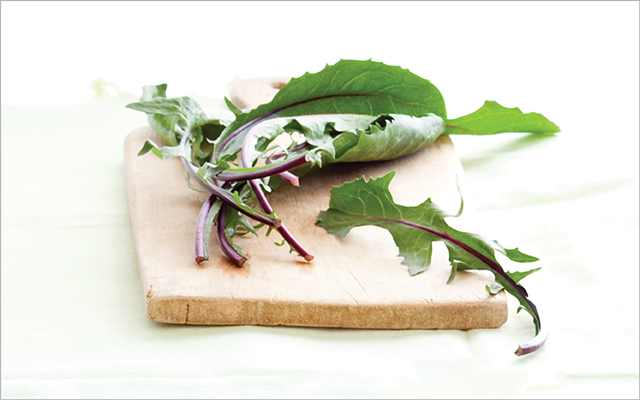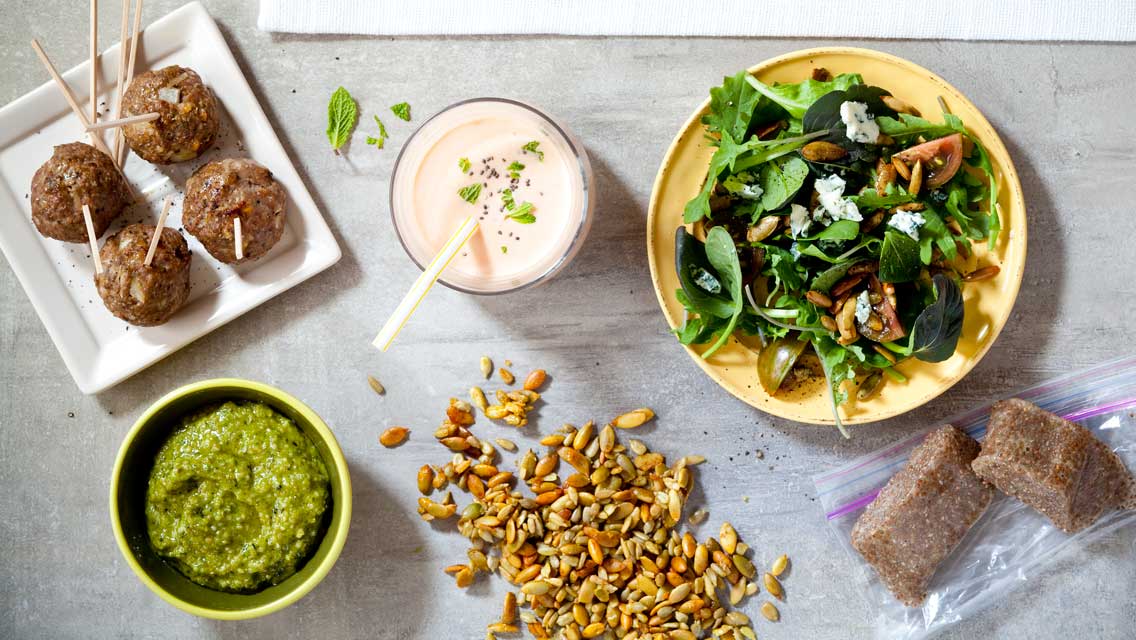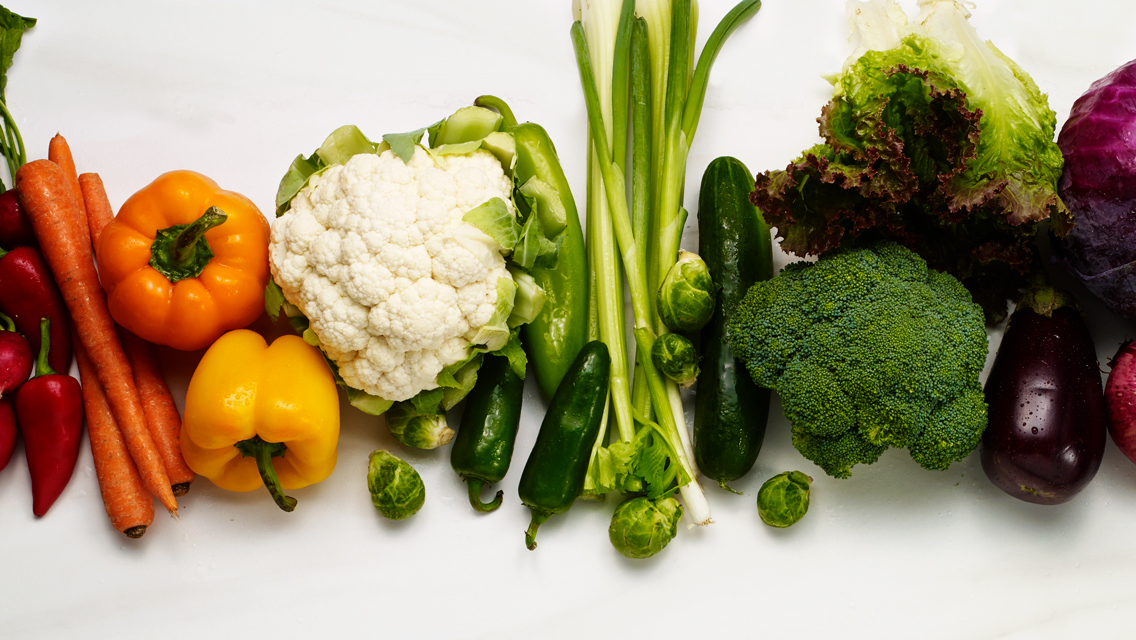In 1930, rancher Warren H. Monfort made an important discovery. He found that by fattening his cattle on cheap, surplus corn, he could sell them whenever beef prices were high, rather than only in the early autumn, when most ranchers shipped their cattle to the slaughterhouse. Plus, Monfort’s corn-fed herd produced fatty, tender beef that – unlike the rest of the grass- and hay-fed cattle population – didn’t need aging.
What Monfort didn’t realize at the time is that corn makes cattle sick. Really sick. It acidifies their rumin, imbalances their blood sugar, and then leaves them malnourished and vulnerable to a host of diseases.
“These cattle are on the edge of death – they’re obese; they’re insulin-resistant. It’s all the vets can do to keep these animals alive for the 14 weeks they’re sequestered in feedlots before they’re slaughtered,” says Loren Cordain, PhD, a Colorado State University health and exercise science professor and author of The Paleo Diet.
What really troubles Cordain is that most Americans are eating a similarly modernized and homogenous diet of convenience – lots of grains, lots of processed foods. And as a result, we suffer from many of the same health problems that plague feedlot animals: obesity, cardiovascular disease, diabetes and cancer.
But these so-called diseases of civilization might be easily eradicated if the animal population – including human animals – returned to the ancestral diets that better suited their biologies, Cordain and other researchers assert. For cows, that diet might be a spread of prairie grasses, blue grama and clover. For turkeys, it would be bugs, berries and salamanders. And for humans, it would be the prehistoric palate: a diverse array of wild plants and free-ranging animals.
Best Game in Town
Obviously, our culture has changed dramatically since prehistoric times, when humans hunted and foraged for their sustenance, but Cordain says our bodies still operate most efficiently on that diet. “Ten thousand years is an evolutionary blink,” he says.
Wild or near-wild foods simply tend to be higher in the nutritional compounds we need more of, and lower in the compounds we don’t. In Health Secrets of the Stone Age, author Philip Goscienski, MD, notes that wild game such as bison, deer and elk contain fewer than 4 grams of fat per 100-gram serving, while modern meats – including conventional chicken breast, turkey and ground beef – have anywhere from 7 to 32 grams. Moreover, meats from free-roaming and pasture-fed animals typically also contain much higher ratios of healthy omega-3 fatty acids, and more mono- and polyunsaturated fats, as opposed to the high levels of saturated fats found in most conventionally raised meats.
Researchers say the human body operates most effectively with a 2-to-1 ratio of omega-6 to omega-3 fatty acids. If the balance is out of whack, the body can suffer long-term damage, leading to organ and tissue problems, including heart disease and cancer. In the United States, the average diet contains 10 to 15 times as many omega 6s as omega 3s.
Studies show that traditional grain-fed steers have an omega-6-to-omega-3 ratio ranging from 5 to 1 to 13 to 1. But wild game and grass-fed steers present a much healthier picture: 2 or 3 to 1. And wild fish such as salmon, herring and sardines are even better, with around seven times more omega 3s than 6s.
Incredible Edibles
Just as wild and pasture-raised meats help us balance our intake of essential fatty acids, wild plants offer impressive levels of important vitamins, minerals and phytochemicals. Dandelion greens, for example, deliver more than double the recommended daily values of vitamins A and K, as well as significant amounts of beta-carotene and lutein, in a scant half-cup serving. Blue violets and garlic-mustard leaves are rich in vitamins A and C, while amaranth leaves are great sources of calcium, iron and phosphorous and can be used as a spinach substitute.
Those items don’t appear on most grocery lists, but wild foods have long been a staple on the Greek island of Crete, where in 1958 researchers began studying the diets of men who lived there. The landmark study, published in 1970, indicated that Cretan men were healthier and had fewer incidences of cardiovascular disease than men in other countries. The difference? A diet rich in edible wild plants such as purslane.
More recently, the Mediterranean Agronomic Institute of Chania in Crete found far higher levels of antioxidants, phenols, minerals and phytonutrients in 25 native wild plants than in cultivated plants. Grecian seaweed, for example, contains more than 20 times the amount of potassium found in cultivated asparagus.
A Question of Convenience
The problem, of course, is that few modern families can forage and hunt for their daily meals. And while organic meats and produce may seem like the best option available (because at least they’re grown without chemicals and tend to offer higher levels of some nutrients), many nutrition experts are now drawing attention to the “beyond organic” benefits of the nutrients found in wild and free-range foods.
“When applied to animal foods, the term ‘organic’ may be pretty meaningless, because an organic turkey is raised in a barn, never goes outside and is not eating the insects it is designed to eat,” says Sally Fallon, president of the Weston A. Price Foundation, a Washington, D.C.– based nonprofit organization committed to restoring whole, traditional, nutrient-dense foods in people’s diets.
Fallon recommends eating pasture-fed meats from animals whose diets largely mimic what they would eat if they roamed freely. “The fat and organ meats of grass-fed animals are much higher in vitamins and minerals,” she says. Although this type of meat tends to have a bit more fat per serving than wild game, and may not be quite as high in omega-3 fatty acids, Cordain notes that the differences are slight.
The same concept applies to fish: For the biggest nutritional punch, seek out varieties that eat what nature intended. For the carnivorous salmon, this means crustaceans and plankton. For the omnivorous tilapia, aquatic vegetation and detritus. Farmed fish, by contrast, eat a diet of feed containing forage fish, poultry byproducts (even feathers), blood meal, corn, soy and wheat. These fish not only have elevated levels of PCBs, dioxins and other contaminants in their flesh, but they contain higher levels of omega-6s and lower amounts of omega-3s, according to the Washington, D.C.–based Center for Genetics, Nutrition and Health.
Similar lessons can be applied to milk- and grain-based foods (milk products from pasture-fed cows tend to be healthier, as do ancient grains, like spelt and amaranth). As a rule, though, Cordain and other experts recommend minimizing both dairy and grains as much as possible, noting they were never part of our pre-agriculture diets and contribute to dietary imbalances when consumed in excess. “At the very least, eat dairy products from grass-fed animals, and eat whole grains,” advises Jo Robinson, author of Pasture Perfect and creator of www.eatwild.com.
Fallon argues that people can benefit from consuming raw milk products and also grains that have been fermented, such as those found in sourdough bread. Fermenting neutralizes grains’ phytic acid, increases vitamin content, and partially breaks down tannins, complex sugars and other hard-to-digest substances. Fallon also recommends older grain varieties, such as rye and wild rice.
One thing all parties can agree on: Refined grains increase the glycemic load, which is closely related to heart disease and diabetes, among other ailments. Plus, modern wheat has atrociously high levels of gluten, which has been blamed for the increasing prevalence of celiac disease and other intestinal problems.
Clear advice is even harder to find when you’re searching for healthy alternatives to nutrient-dense wild plants. Research comparing modern cultivars with organic produce and heirloom varietals is not yet conclusive – at least not in a useful way. “You would have to go cultivar by cultivar through all the scientific data to find out which one is the best,” says Robinson. In the meantime, she suggests, shop for organic or locally grown heirloom varieties of fruits and vegetables that are darker in color (these are believed to be closer to their wild plant forebears).
Experts point out that – just as with feedlot cows and factory-farmed grains – commercial produce is generally more about profit than taste or nutrition. Common supermarket varieties of fruits and vegetables are popular with conventional food growers and distributors because they mature quickly, harvest easily and travel well under mass-market conditions, and not because they are particularly delicious or nutritious. Wild foods, on the other hand, tend to be delicate. But they deliver practical nutritional benefits as well as sensory and spiritual gifts.
“When you talk about wild foods, you can’t just talk about fatty acids and carbs and vitamins,” notes Marc David, nutritionist and author of The Slow Down Diet. “Wild foods are special because they have a power, a potency, a personality, a soul.”
Wild Food Suppliers
Wild Plants: If you’ve never foraged for wild plants, join an edible food and ecology tour led by a knowledgeable wildcrafter. Start by asking around at nature centers and the park districts in your area. With some professional guidance, you’ll know which plants are safe to eat, which are endangered and which ones might need to repopulate. And don’t be discouraged if you live in a city. One of the most famous wildcrafting tours is led through New York City’s Central Park! Find out more at www.wildmanstevebrill.com and www.wildfoodadventures.com.
Heirloom Produce: Heirloom fruits, vegetables and herbs can often be found through co-ops and farmers’ markets (as can some wild plant foods). Or you can grow your own: Seed Savers Exchange, a nonprofit organization of gardeners, publishes a thick reference book with about 11,000 listings of rare vegetable, fruit and grain varieties available to gardeners. Find out more at www.seedsavers.org.
Wild Meats: Hit a natural market, co-op or farmers’ market where you’re likely to find venison, wild game birds, bison and wild-caught fish. A few well-known ranchers include Venison World in Eden, Texas (www.venisonworld.com); Broken Arrow Ranch in Ingram, Texas (www.brokenarrowranch.com); and Wild Idea Buffalo Company in Rapid City, S.D. (www.wildideabuffalo.com). Other online retailers abound.
Grass-Fed Meats and Free-Range Eggs: Of the 800,000 cattle producers in the United States, about 2,000 are marketing all-grass-fed animals, according to Jo Robinson, who maintains a comprehensive list of producers on her Web site, www.eatwild.com. The Weston A. Price Foundation (www.westonaprice.org) also has local chapters that assist members in finding compatible farmers. Free-range eggs are now available at most markets, as well as many local co-ops and farmers’ markets.
This article originally appeared as “On the Wild Side ” in the July/August 2007 issue of Experience Life.




This Post Has 0 Comments